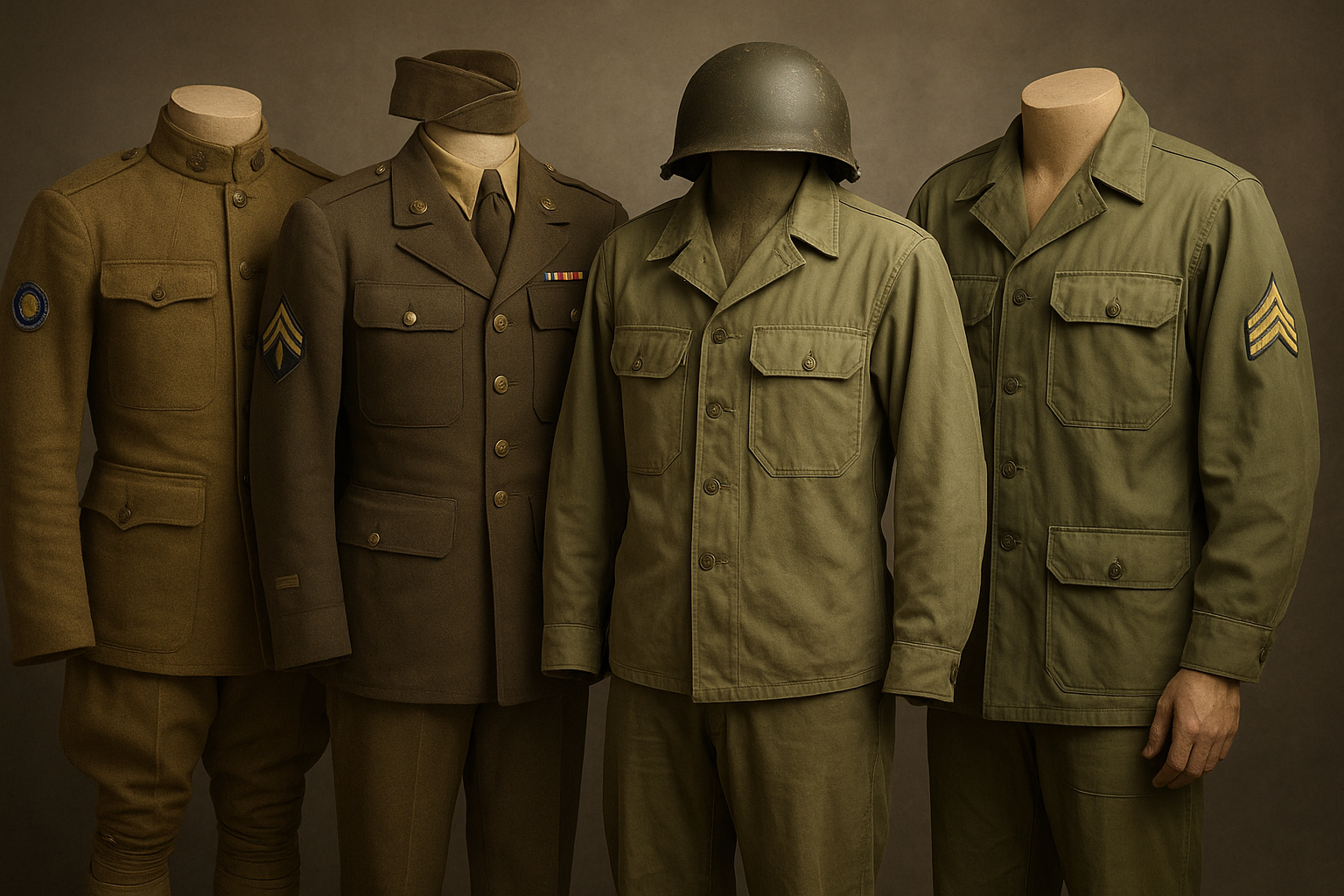
Korean War Uniforms: A Complete Guide to U.S. Military Attire 1950–1953
Published on Sep 22, 2025
Exploring Korean War and World War 2 Uniforms: A Collector’s Guide to History & Gear
Did you know? A pristine World War 2 uniform worn by a U.S. paratrooper can fetch over $10,000 at auction!
That’s not just a price tag—it’s a symbol of history, craftsmanship, and heritage.
If you’re passionate about WWI, WWII, or the Korean War, you’ve probably admired the fine detail in vintage uniforms or considered collecting them. From the us WWII uniform to the more advanced World War II American uniforms, these pieces are more than fabric—they’re living history.
In this guide, we’ll walk through:
- How to identify and collect Korean War & World War 2 uniforms
- Common pitfalls collectors face
- Trends shaping the historical gear market today
- Actionable steps for preserving, showcasing, and buying these treasures
Whether you're a history buff, museum curator, reenactor, or collector, this is your one-stop resource.
H2: Understanding the Different Eras of U.S. Military Uniforms
Military uniforms evolved significantly across WWI, WWII, and the Korean War. Each era offers unique styles, patches, and materials that reflect its time.
WWI: Classic & Symbolic
The WW1 American uniform is defined by:
- Wool field tunics in olive drab
- Breeches and puttees (wrapped leggings)
- The iconic "Doughboy" helmet
- Simple shoulder insignia and uniform patch, World War I, 1 United States
Key identifier: The United States Army dress uniforms of World War 1 featured brass buttons, and soldiers wore wool shirts with high collars known as “stand and fall” collars.
WWII: Functional & Evolving
World War 2 uniforms saw rapid changes due to:
- Technological advancements
- Climate-specific gear (tropical vs. European theater)
- Rank and unit-specific insignia
Key elements:
- M1941 and M1943 field jackets
- HBT (Herringbone Twill) fatigues
- Paratrooper jump uniforms with reinforced knees and elbows
- Distinctive World War II American uniform patches by division and regiment
Korean War: Bridging Old and New
This era blends WWII leftovers with Cold War innovation:
- Uniforms transitioned to more durable cotton materials
- Introduction of olive green shades that would dominate future conflicts
- Reuse of WWII gear makes identification tricky
- Rank worn on collars and caps
You’ll often find hybrid uniforms mixing WWII styles with Korean War elements—one of the many reasons proper identification is essential.
H2: Actionable Steps to Start (and Succeed in) Uniform Collecting
You don’t need a museum budget to begin collecting military uniforms—but you do need a plan.
Step 1: Define Your Intent
Are you collecting for display, investment, reenactment, or preservation?
This affects:
- What conditions do you accept
- How much do you spend
- Which Intents: Informational 60%, Commercial 40% or Intents: Transactional 100% items you focus on
Step 2: Learn to Spot Fakes
Common pitfalls include:
- Reproduction patches passed off as original
- WWII uniforms modified post-war and sold as rare variants
- "Franken-uniforms" assembled from parts of different eras
💡 Tip:
Inspect stitching, tag placement, and button materials. WWII items often have specific contract stamps and ink markings inside.
Step 3: Buy from Reputable Sources
Use:
- Veteran estate sales
- Reputable military surplus dealers
- Verified eBay sellers with clear provenance
- Auction houses specializing in military history
⚠️ Avoid deals that seem “too good to be true.” Many frauds target new collectors.
Step 4: Preserve Your Collection Like a Pro
Real gear requires real care:
- Store in climate-controlled environments
- Use acid-free tissue paper and cotton gloves
- Avoid hangers (they stretch fabric)
- Document each piece with photos and background info
H2: Market Trends in Military Uniform Collecting
Trend #1: Korean War Items Are Rising in Value
With WWI and WWII becoming saturated markets, collectors are shifting to the Korean War, where rare uniforms are undervalued—for now.
Items to watch:
- Combat shirts with early U.S. camouflage patterns
- Transitional gear (WWII reused in Korea)
- Korean War-specific medals and insignia
Trend #2: Complete Sets Command Premium Prices
A full us WWII uniform with helmet, tunic, breeches, and patches fetches far more than individual pieces.
Bundling advice:
- Seek accessories like uniform patches, World War 1 united States, bayonets, and field gear
- Display as full kits for both value and visual impact
Trend #3: Storytelling Sells
Buyers now look for provenance—who wore it, when, and where.
🔥 A World War 2 uniform worn by a D-Day paratrooper with documentation will always sell faster than a random tunic.
H2: How to Showcase Your Uniform Collection
Don’t let history sit in the closet.
Reenactments & Living History Events
Show off uniforms at local events. Many enthusiasts combine display with historical education.
Shadowboxes & Display Mannequins
- Use UV-protective glass
- Include nameplates and tags
- Display items like helmets, medals, and ID cards alongside
Digital Documentation
Create an online gallery or Instagram account. Use hashtags like:
- #ww2uniform
- #militarycollector
- #uswwiuniform
- #koreanwargear
This builds community, shares knowledge, and even helps in appraising or selling pieces.
Conclusion: Honor History, One Uniform at a Time
Collecting World War 2 uniforms, WW1 American uniform pieces, or Korean War gear is more than a hobby—it’s a commitment to remembering sacrifice, strategy, and innovation.
By following actionable steps, avoiding common traps, and staying in tune with trends, you’ll build not just a collection—but a legacy.
So, whether you're drawn by Intents: Informational 100%, Commercial 50%, or Transactional 100%, remember this: every patch, button, and thread has a story to tell. And now, you're part of describing it.
